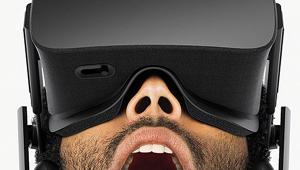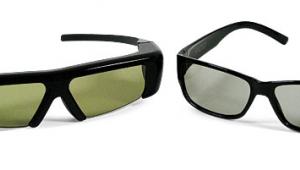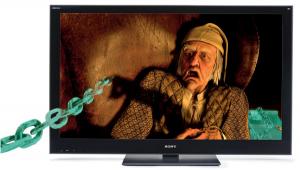Sony has 2d-to-3d conversion also.
Samsung 3DTV Briefing

Samsung's 3DTVs implement a true 240Hz refresh rate, unlike many other LCD TVs that use a 120Hz rate. (Many companies claim 240Hz operation, but it's actually 120Hz with backlight flashing to simulate 240Hz.) This is a critical distinction for 3D LCD TVs, since the refresh rate is cut in half for each eye when displaying 3D content. As a result, 120Hz LCD TVs are unlikely to perform as well as 240Hz models in 3D mode.
In addition, Samsung uses black-frame insertion between the images for the right and left eyes, turning off the LEDs during half of each eye cycle. (In the diagram above, the upper portion illustrates the process of frame interpolation at 120Hz and 240Hz, while the lower portion illustrates black-frame insertion at 240Hz, both in 2D mode. In 3D mode, the frames alternate between the left and right eyes.) Of course, the active-shutter glasses are synchronized so that the left lens is open while the left-eye image is displayed and the right lens is open when the right-eye image is displayed.
Why insert a black frame between each left and right image? Because LCD pixels take some time to change their state. In a 3D set without black-frame insertion, each pixel in the left-eye image is decaying while the right-eye image is appearing and vice versa. As a result, the right eye sees a bit of the left-eye image and vice versa, a condition called crosstalk, which can cause ghosting, smearing, and greater eye fatigue.
Samsung solves this problem by inserting black frames between each image, which prevents viewers from seeing the pixel decay and thus reduces crosstalk dramatically. In this case, each eye sees 60 active images per second—240 divided by 2 for each eye, then divided by 2 again to account for the black frames.
I also learned that Samsung is working on 3D test patterns, a few of which I got to see in their prototype form. The ones I saw weren't 3D per se—that is, they had no depth. But such test patterns are important for correctly adjusting the TV's basic picture controls in its 3D mode, for which the best settings of brightness, contrast, color, and tint are quite different than they are in 2D mode.
Why not just use normal 2D test patterns in 3D mode? This is actually possible with Samsung 3DTVs thanks to their 2D-to-3D conversion, but no other brand of 3DTV—except the upcoming Toshiba Cell TV—offers this feature as far as I know. On 3DTVs without such conversion, displaying a 2D test pattern in 3D mode splits the image into two overlapping images, rendering it useless.
It's particularly interesting that Samsung is working on 3D test patterns even though they are not needed with its own TVs. Unfortunately, the company is not planning to release these test patterns to the general public. I hope someone makes such patterns available so users can set the basic picture controls in 3D mode.
- Log in or register to post comments

























































